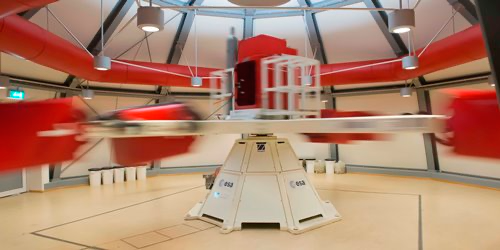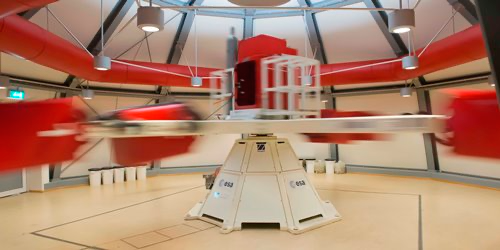Probing Wave Turbulence at High Gravity
Wave turbulence pops up wherever large numbers of waves bump into each other and interact, like in the ocean. But even though the phenomenon is ubiquitous, our understanding of it is incomplete. In a new centrifuge-based experiment, a team led by Eric Falcon of CNRS and Paris Diderot University cranked up the “gravity” acting on a basin of water to about 20 times that of Earth’s, allowing them to study gravity-dominated wave turbulence in a regime that previous experiments have been unable to reach. They found that the turbulent wave behavior was dependent on the size of the fluid’s container—a factor that current wave-turbulence theories usually don’t take into account.
For surface waves on a liquid, gravity dominates the behavior at low frequencies, while capillary action is more important at high frequencies. In Earth’s gravity, the transition between these regimes occurs at around 13 Hz, which means lab experiments typically have a limited range (from about 1 to 13 Hz) for studying gravity-dominated waves. But by increasing the effective gravitational acceleration, Falcon and colleagues were able to investigate gravity-dominated waves up to frequencies of 130 Hz.
At the European Space Agency’s Large-Diameter Centrifuge in the Netherlands, the team used a wavemaker to create turbulent waves in their water basin. From the recorded wave spectrum, they found that—contrary to what theory predicted—the timescales of wave interactions and of dissipation didn’t depend on wave frequency. Instead, this turbulent wave behavior was dictated by the longest available wavelength mode, whose frequency is set by the diameter of the basin. The findings suggest that “container” size needs to be considered in studies of water waves in an ocean—as well as atmospheric waves on Earth and plasma waves in magnetic confinement fusion experiments.
This research is published in Physical Review Letters.
–Erika K. Carlson
Erika K. Carlson is a freelance science writer based in Brooklyn, New York.





